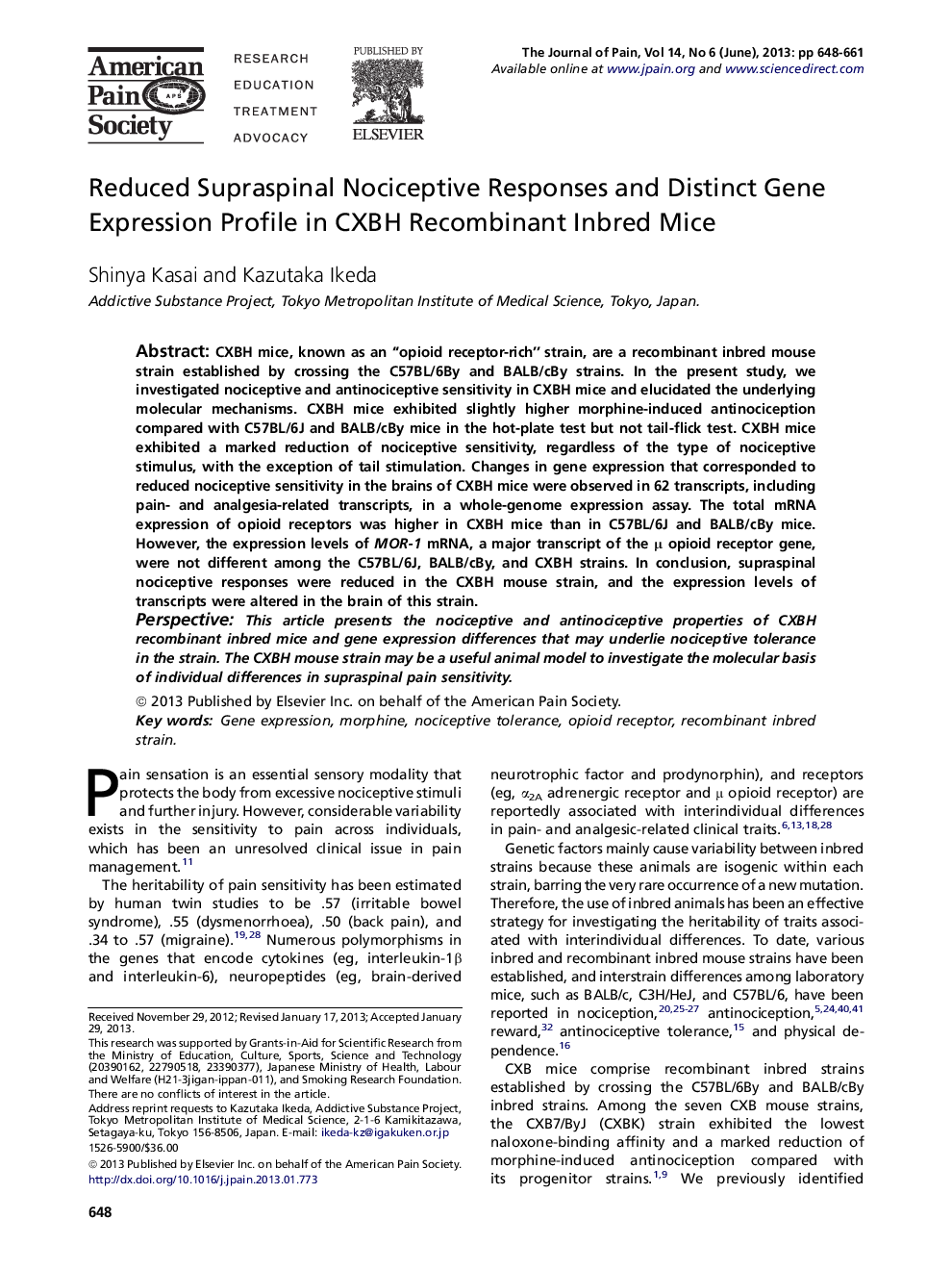| Article ID | Journal | Published Year | Pages | File Type |
|---|---|---|---|---|
| 2728655 | The Journal of Pain | 2013 | 14 Pages |
CXBH mice, known as an “opioid receptor-rich” strain, are a recombinant inbred mouse strain established by crossing the C57BL/6By and BALB/cBy strains. In the present study, we investigated nociceptive and antinociceptive sensitivity in CXBH mice and elucidated the underlying molecular mechanisms. CXBH mice exhibited slightly higher morphine-induced antinociception compared with C57BL/6J and BALB/cBy mice in the hot-plate test but not tail-flick test. CXBH mice exhibited a marked reduction of nociceptive sensitivity, regardless of the type of nociceptive stimulus, with the exception of tail stimulation. Changes in gene expression that corresponded to reduced nociceptive sensitivity in the brains of CXBH mice were observed in 62 transcripts, including pain- and analgesia-related transcripts, in a whole-genome expression assay. The total mRNA expression of opioid receptors was higher in CXBH mice than in C57BL/6J and BALB/cBy mice. However, the expression levels of MOR-1 mRNA, a major transcript of the μ opioid receptor gene, were not different among the C57BL/6J, BALB/cBy, and CXBH strains. In conclusion, supraspinal nociceptive responses were reduced in the CXBH mouse strain, and the expression levels of transcripts were altered in the brain of this strain.PerspectiveThis article presents the nociceptive and antinociceptive properties of CXBH recombinant inbred mice and gene expression differences that may underlie nociceptive tolerance in the strain. The CXBH mouse strain may be a useful animal model to investigate the molecular basis of individual differences in supraspinal pain sensitivity.
